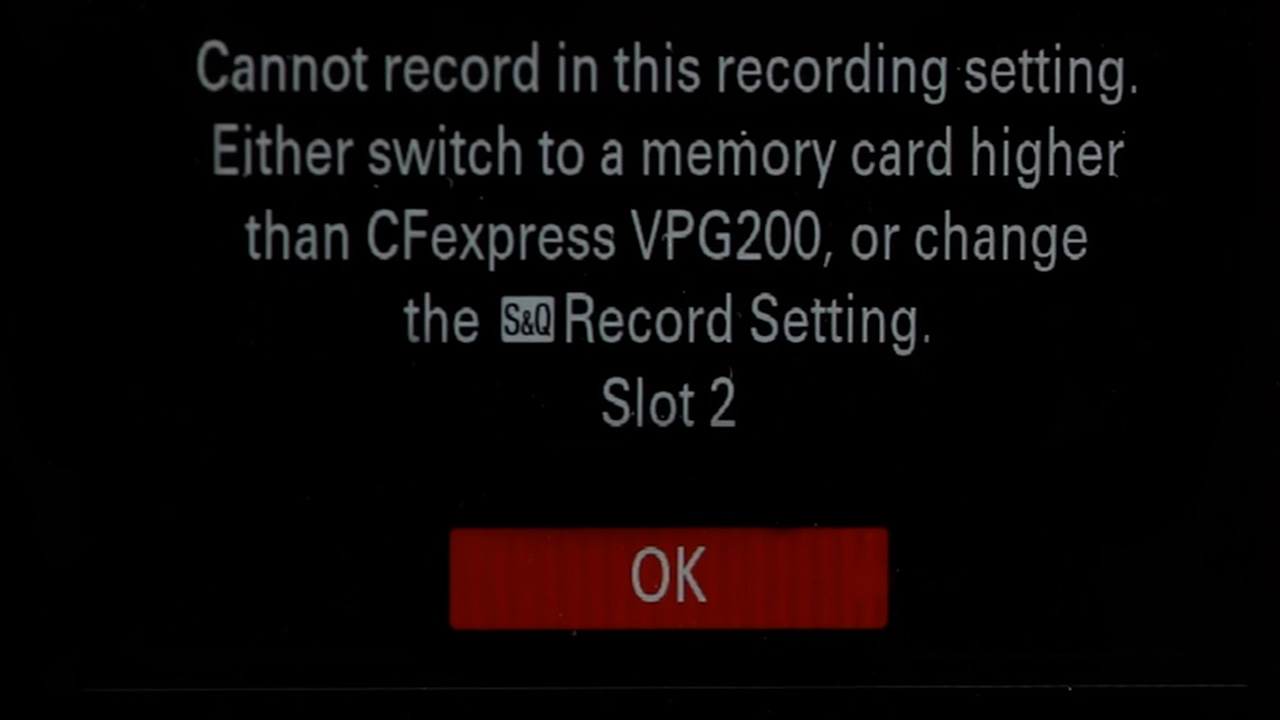Today we are taking a look at the two new CFexpress Type A memory cards from Lexar the 160GB and 320GB cards to see how well they perform.
In the past year or so we posted two videos looking at CFexpress Type A cards from Prograde and Delkin comparing them to the original card from Sony and you should look at both of them if you are considering which card to buy. Today we are doing the same with the new cards from Lexar.
The 160GB and 320GB Lexar CFexpress Type A cards and the new CFexpress Type A/SD card reader
 Stills Performance
Stills Performance
For our stills shooting test, we used the Sony A1 – the only camera that can currently unleash its full high-speed potential using a CFexpress Type A card.
We performed the test using our Sony 20mm f/1.8 lens with a 1/2000 shutter speed in MF mode with electronic shutter, High+ drive mode (30fps)* shooting compressed RAW files, and here are the results for a 10-sec burst with both the Lexar and Sony cards:
- Sony 160GB CFexpress A – 159 images.
- Lexar 160GB CFexpress A – 155 images.
- Lexar 320GB CFexpress A – 159 images.
When it comes to buffer clearing, we got the following results:
- Sony 160GB CFexpress A – 102 images in 10 seconds.
- Lexar 160GB CFexpress A – 102 images in 11 seconds.
- Lexar 320GB CFexpress A – 102 images in 10 seconds.
* Update: Please note that in the video we had the drive mode set to High (20fps) and not High+ (30fps) on the A1 and the results in the video reflect that. The updated results above were retaken on the A1 in the High+ mode.
Video Shooting
As we noted in our previous reviews, both the A1 and the A7S III can shoot in almost any type of video format and setting using either V60 or V90 SD cards.
On the Sony A1, there are only two types of S&Q settings where you must use CFexpress Type A cards and these are the XAVC S-I 4K 120p and 1080p 240p. Trying to shoot in both these modes using even our fastest V90 card will result in the following massage:
Luckily this doesn’t happen with the Lexar cards (or any other CFexpress card that we tested for that matter), other than that we have little to say about the performance of the cards when it comes to shooting videos – they just work.
Computer file transfer
We used our main studio computer (with dual Samsung 970 EVO drives) with the Sony CFexpress A card reader and transferred around 123GB of videos and stills to and back from the computer here are the results that we got:
- Sony 160GB CFexpress A – 394MB/s (312 seconds) read / 448MB/s (274 seconds) write.
- Lexar 160GB CFexpress A – 380MB/s (323 seconds) read / 326MB/s (377 seconds) write.
- Lexar 320GB CFexpress A – 600MB/s (205 seconds) read / 488MB/s (252 seconds) write.
The results for the larger Lexar card are visibly better than the two smaller cards which is interesting.
Since we also got the Lexar card reader, we did the same test with it and go the following results:
- Sony 160GB CFexpress A – 88MB/s (1396 seconds) read / 162MB/s (757 seconds) write.
- Lexar 160GB CFexpress A – 534MB/s (230 seconds) read / 549MB/s (224 seconds) write.
- Lexar 320GB CFexpress A – 640MB/s (192 seconds) read / 549MB/s (224 seconds) write.
As you can see there was something clearly wrong when using the Sony card with the Lexar reader (we tested this 3 different times with different cables and the results were always very poor). With the Lexar cards and especially the 320GB version, the Lexar reader was even faster than the Sony reader.
We are planning to do a very extensive CFexpress A card reader comparison at some point so stay tuned for that.
Work best together – the cards and the new reader
Conclusion
The Lexar cards seem to perform just as well as the Sony card for stills and video shooting and even better for data transfer to the computer, especially using the new Lexar card reader.
Finally, it’s nice to see larger capacities for CFexpress A users on the market now the only thing we want to see are much more competitive pricing.
Pricing
Talking about pricing, the Lexar CFexpress A 160GB card sells for $370 and the 320GB version with the Lexar card reader sells for around $700.
You can check out more LensVid exclusive articles and reviews on the following link.

You can support LensVid by shopping with our affiliate partners
Affiliates: Amazon, B&H, Adorama and E-bay.
Why should you trust us?

